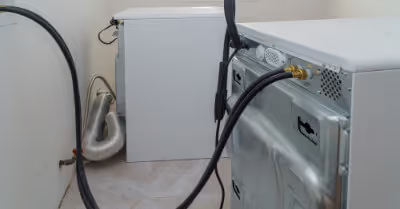Table of Contents
Energy
The primary reason that ants are attracted to sugar is that it is a calorie dense food that is a good source of energy. This is actually the same reason we like sugar so much! Sugar is calorie and carbohydrate dense. This is what makes it an energetic food for ants and humans alike.
Ants are hard workers that are almost always moving. Think about how far they walk compared to their size! In order to do this, they need to consume food that provides them with energy. Sugar and other sweeteners can give ants the energy they need to continue working all day long.
Ants also carry around food particles and often take them back to their nest or mound. Sugar is not only calorie dense, but it is also light weight. This means that sugar can provide ants with lots of energy and also doesn’t require them to use as much energy to carry it around.
How Do Ants Sense and Locate Sugar?
The fact that ants always find even the smallest amounts of sugar can be frustrating. How do they know it's there and find it?
Ants have odor receptors in their antennae and have a strong sense of smell from them. They actually have a lot more odor receptors than other types of insects.
Ants are able to sense chemicals in the environment using the olfactory receptors that are located on an ant’s back. One of the chemicals they can “smell” is found in sugar.
Once one ant finds sugar, it will leave a trail of chemicals called pheromones that other ants can smell and follow to the source. As more and more ants walk along the original pheromone trail, they add their own pheromones to it making it stronger.
In addition, ants will exchange stomach contents with each other to show them the type of food that is at the end of their pheromone trail. Since ants like sugar and need it for energy, they are likely to follow the pheromones that lead to sugar if they see that a fellow ant has eaten it.
What Types of Ants Eat Sugar?
A lot of ant species like to find and devour your sugary treats. However, some ants prefer other foods including grease and dead bugs. For the sake of home invading ants, we divide them into two categories: protein and sugar.
The term “sugar ants” refers to any of a few ant species that typically invade our homes to search for sugar. The most common “sugar ants” are Odorous House Ants, Pavement Ants, Argentine Ants, Pharaoh Ants, and Carpenter Ants.
Most sugar seeking ants are merely a nuisance. However, carpenter ants can dig through the wood in your house and cause significant damage. The destruction can cause you financial stress, mental worry, and structural harm. If you suspect you have Carpenter Ants you need to act immediately in order to get rid of them before too much damage is done.
Getting Rid of Sugar Ants
Well, first you need to remove any and all sugar that they are attracted to in the first place. This will include any sugar, honey, sugary treats, and even fruit. It doesn’t have to be much sugar because even sugary residue could potentially attract hundreds of ants. Also, make sure all containers of sugar and sugary foods are completely sealed.
It is also important to note that “sugar ants” could also be attracted to other foods. Scrubbing down cabinets, countertops, stovetops, and everything else can help to remove all residue that could be attracting ants into your home.
Have you ever noticed, though, that ants seem to be more attracted to some sugar, like soda, than other sugary treats? Ants can easily swallow liquid items so popsicles, fruit juice, and soda will attract more ants than solid sugars. It is important to throw away and clean these items immediately.
The next step to get rid of the ants is to follow their trail as far as you can. This will help you see where the ants are coming into the house. After that, there are some different methods to get rid of them completely.
An easy thing that you can do is throw off the ants’ sense of smell. Just hanging some garlic around the kitchen can help to cover up the smell of sugar that they are attracted to.
There are also a couple smells that ants hate: coffee and peppermint. Using peppermint oil on countertops and in the pantry can prevent more ants from entering your home in search of sugar. Also, you can spread coffee grounds around the ants’ entry points on the interior and exterior to keep them away.
Another easy prevention method is to vacuum more often because food crumbs often get trapped in your carpet. It will also remove any pheromones that the ants put on the floor.
If the prevention methods don’t work, you may have to kill the ants off. Since you know that ants are sugar lovers, you can use that same concept to help eliminate them from your home. You can make bait and traps with jelly. Just add boric acid or Borax so it can be taken back to their home to poison the entire colony. Killing the ants you see won't get rid of the ant problem you face, but poisoning their entire mound can.
One final option can be implemented if you find the ants’ nest. Sugar ant nests are shaped like volcanoes. It is a good idea to eliminate the nest to prevent them from entering your home. One way is to flood the nest with water. You can use boiling water to make this method more effective.
Another way to destroy the mound is by using chemicals. You can pour bleach into the ant nest or sprinkle baking soda all around it. Keep checking on the nest and using different methods until it is wiped out.
Recent Articles
















